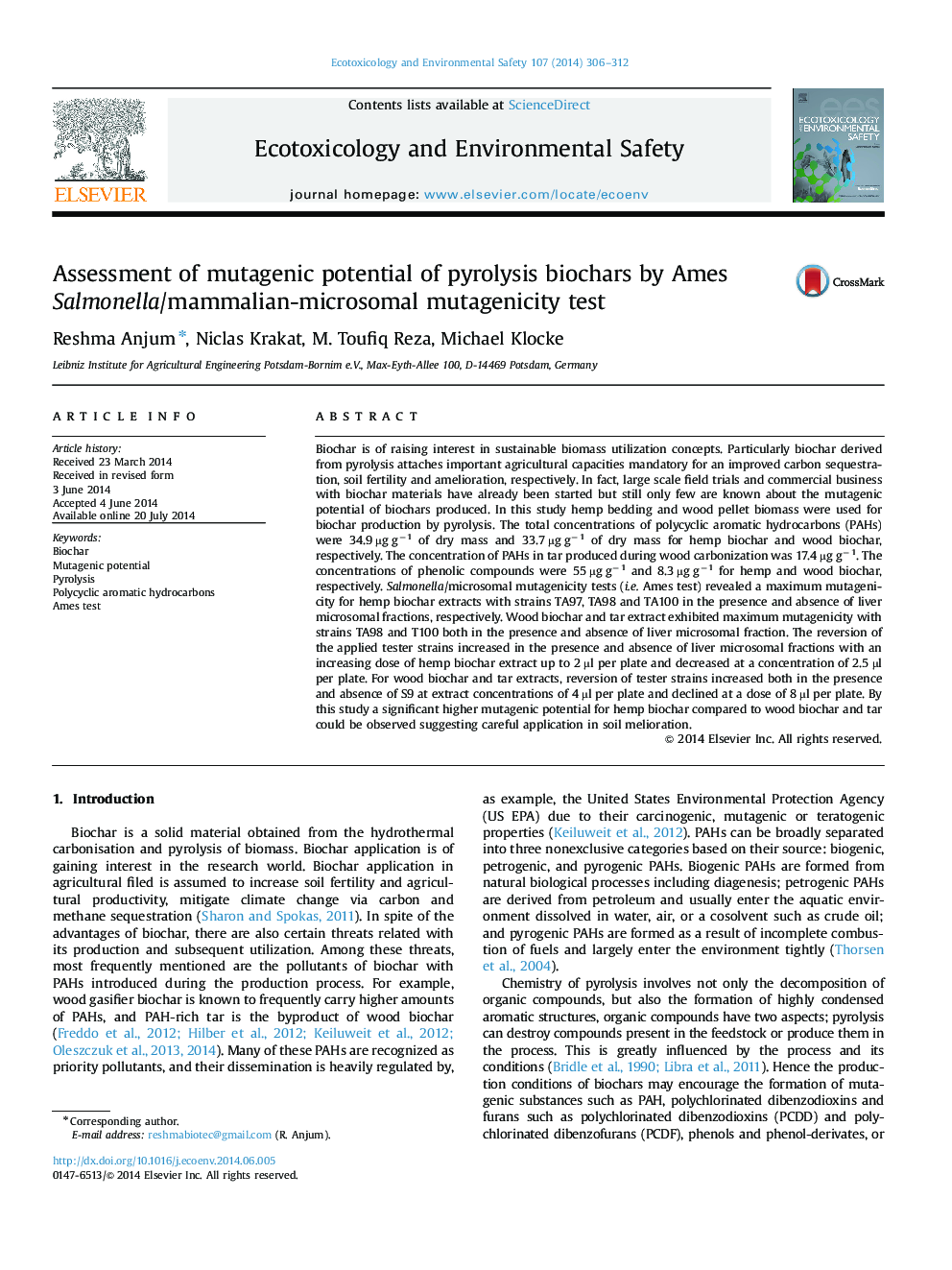| کد مقاله | کد نشریه | سال انتشار | مقاله انگلیسی | نسخه تمام متن |
|---|---|---|---|---|
| 4419954 | 1618956 | 2014 | 7 صفحه PDF | دانلود رایگان |

• Petrogenic and pyrogenic PAHs were quantified by GC–MS.
• Ames test was adopted for mutagenicity testing of pyrolysis biochars and tar.
• PAHs caused frame shift mutation at G–C site of TA98 and TA100 strains.
• Hemp biochar was more mutagenic than wood biochar and tar.
Biochar is of raising interest in sustainable biomass utilization concepts. Particularly biochar derived from pyrolysis attaches important agricultural capacities mandatory for an improved carbon sequestration, soil fertility and amelioration, respectively. In fact, large scale field trials and commercial business with biochar materials have already been started but still only few are known about the mutagenic potential of biochars produced. In this study hemp bedding and wood pellet biomass were used for biochar production by pyrolysis. The total concentrations of polycyclic aromatic hydrocarbons (PAHs) were 34.9 µg g−1 of dry mass and 33.7 µg g−1 of dry mass for hemp biochar and wood biochar, respectively. The concentration of PAHs in tar produced during wood carbonization was 17.4 µg g−1. The concentrations of phenolic compounds were 55 µg g−1 and 8.3 µg g−1 for hemp and wood biochar, respectively. Salmonella/microsomal mutagenicity tests (i.e. Ames test) revealed a maximum mutagenicity for hemp biochar extracts with strains TA97, TA98 and TA100 in the presence and absence of liver microsomal fractions, respectively. Wood biochar and tar extract exhibited maximum mutagenicity with strains TA98 and T100 both in the presence and absence of liver microsomal fraction. The reversion of the applied tester strains increased in the presence and absence of liver microsomal fractions with an increasing dose of hemp biochar extract up to 2 µl per plate and decreased at a concentration of 2.5 µl per plate. For wood biochar and tar extracts, reversion of tester strains increased both in the presence and absence of S9 at extract concentrations of 4 µl per plate and declined at a dose of 8 µl per plate. By this study a significant higher mutagenic potential for hemp biochar compared to wood biochar and tar could be observed suggesting careful application in soil melioration.
Journal: Ecotoxicology and Environmental Safety - Volume 107, September 2014, Pages 306–312